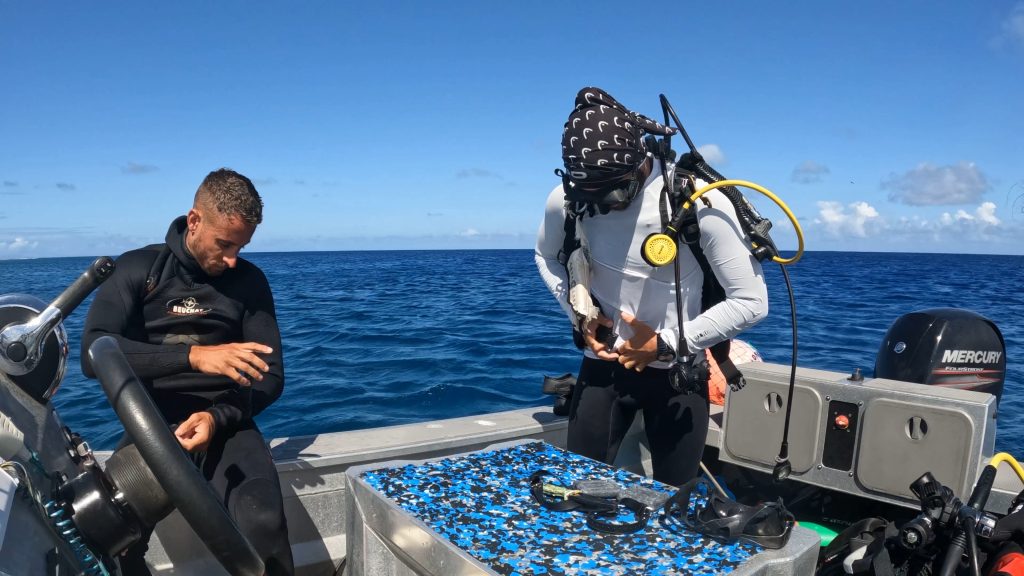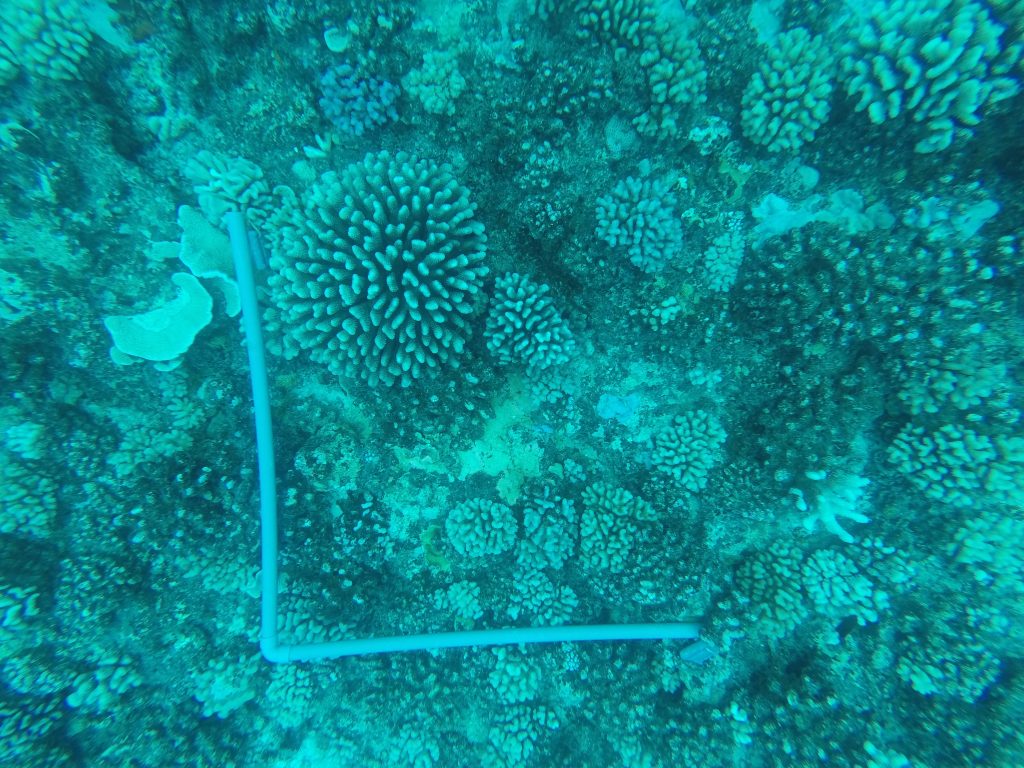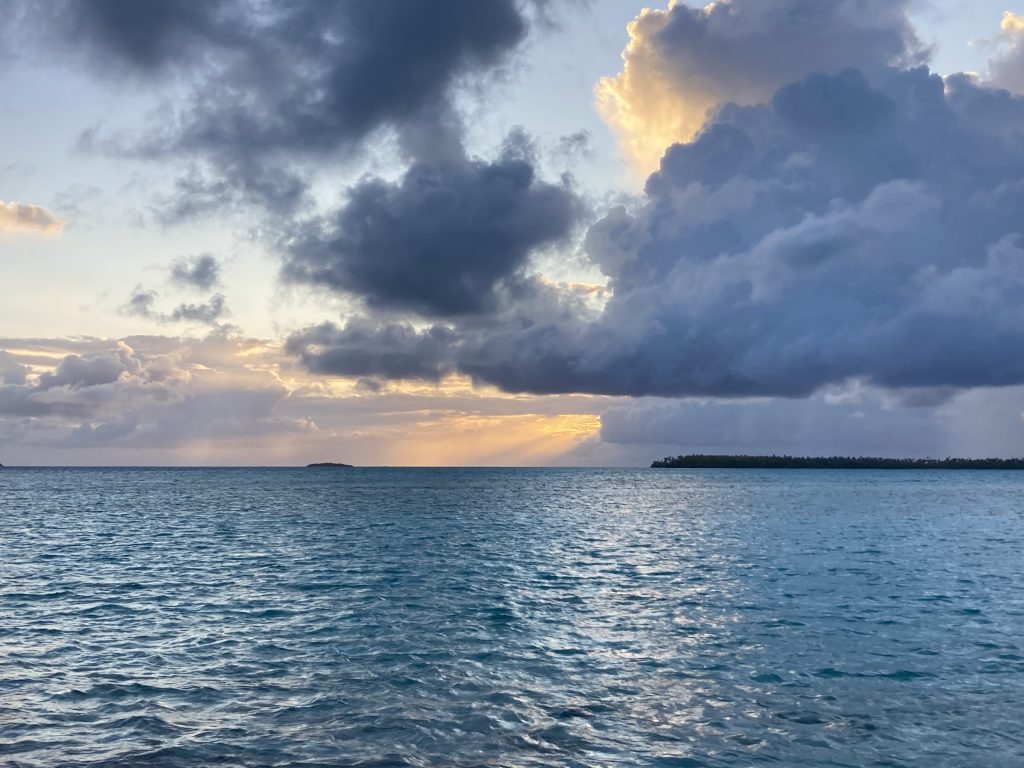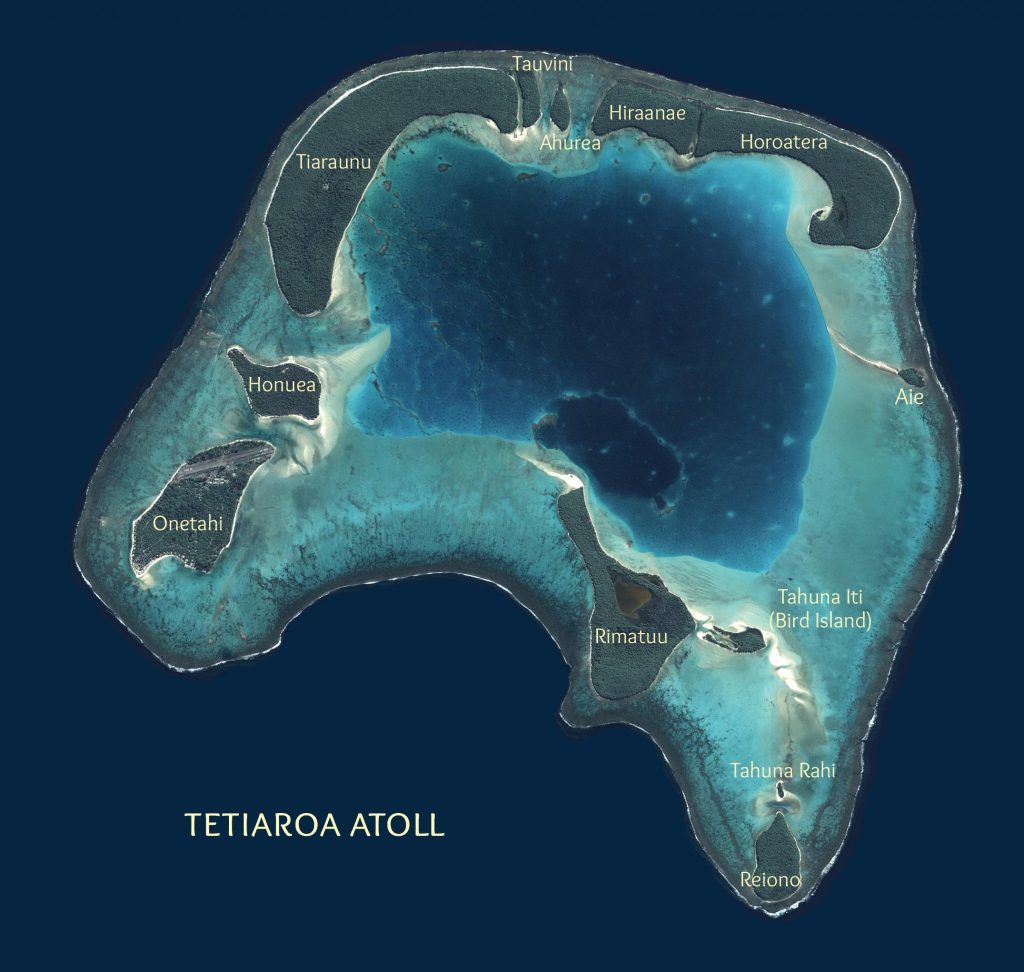A PhD is full of surprises and one of the firsts for me was to travel to the other side of the world, to French Polynesia, and more specifically to Tetiaroa, Marlon Brando’s atoll, located 60 km North to Tahiti. There, the reefs on the outer slope can be both with a high (~ 40%) and low (~ 5%) coral cover. This is precisely what was interesting for me since I aim to understand how habitat loss influences invertebrate communities inhabiting reefs and how their associated trophic network is subsequently modified.
We left the CRIOBE station (Moorea) early in the morning, caught the first ferry, disembarked in Papeete and after a choppy 2 hours trip on a small motor boat, we finally saw Tetiaroa looming on the horizon. As we got closer, we caught a first glimpse of the atoll : a bright blue water surrounded by several motus, sometimes separated with small ‘hoa’ and inhabited mainly by palm trees, coconut trees, and ‘aito’, the iron wood.
The atoll is naturally closed, the only way in and out is a small artificial pass in front of Onetahi, the motu on which we were to spend the next two weeks. Once landed, we were welcomed by Loulou and Antonin from the Tetiaroa Society, the island’s small scientific field station. They showed us our rooms, the lab and brought us on a small tour of the motu.
The next day, Alexandre from the CRIOBE joined our team to support us on the field. The first step was to define my sampling sites. I needed both high and low coral cover as a reflect of the reef’s health; hence we went on a manta tow tour from Oroatera to Reiono, via the west side of the atoll. We selected two sites, ~ 2 km apart from each other but both on the North side of the island, respectively in front of Tiara unu and Oroatera.
Once the sites were defined, the real work started. The daily routine was to wake up at 5 am, get the sampling and diving equipments ready to leave around 6:30 and be on the site thirty minutes later. We used to do one or two dives and then to go back at the Tetiaroa field station around 11 am. The rest of the day was dedicated to the samples treatment in the lab.


Underwater, I retrieved Pocillopora colonies, according to their state : alive, dead and dead with algae. I took a picture of each sampled colony in a 1 m2 quadrat and then wrapped the head in a ziplock to prevent inverts from escaping while it was being chiseled, and eventually secured with a serflex. At last, I did a 20 m2 photogrammetry around the colony to assess its close environment.
Of course, this routine was every once in a while interrupted by unexpected encounters …


Back in the lab, colonies were treated separately. Each one was soaked in a basket of fresh water : the inverts obviously weren’t fond of the change and tried to swim away from the colony, which made them easy to collect. They were then sorted according to their size thanks to several sieves, in four different categories (S, M, L and XL). Pictures of each invert samples were taken, the biomass was measured and a photogrammetry of the coral head as well, to assess its structure.
After 11 days, 42 coral colonies and 218 invert samples, the mission was over and left us very tired but overall very happy. I headed back to Moorea and stored my samples at -80°C, where they now wait to be extracted and sequenced !




